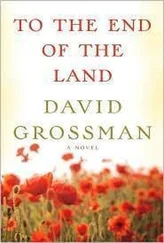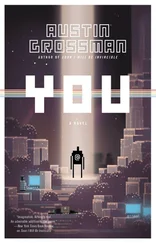David A. Grossman
Arkansas State University
Jonesboro, Arkansas
A Brief Note Concerning Gender
War has often been a sexist environment, but death is an equal opportunity employer. Gwynne Dyer tells us:
Women have almost always fought side by side with men in guerrilla or revolutionary wars, and there isn’t any evidence they are significantly worse at killing people — which may or may not be comforting, depending on whether you see war as a male problem or a human one.
With but one exception, all of my interviewees have been male, and when speaking of the soldier the words of war turn themselves easily to terms of “he,” “him,” and “his”; but it could just as readily be “she,” “her,” and “hers.” While the masculine reference is used throughout this study, it is used solely out of convenience, and there is no intention to exclude the feminine gender from any of the dubious honors of war.
INTRODUCTION TO THE PAPERBACK EDITION
If you are a virgin preparing for your wedding night, if you or your partner are having sexual difficulties, or if you are just curious… then there are hundreds of scholarly books available to you on the topic of sexuality. But if you are a young “virgin” soldier or law-enforcement officer anticipating your baptism of fire, if you are a veteran (or the spouse of a veteran) who is troubled by killing experiences, or if you are just curious… then, on this topic, there has been absolutely nothing available in the way of scholarly study or writing.
Until now.
Over a hundred years ago Ardant du Picq wrote his Battle Studies, in which he integrated data from both ancient history and surveys of French officers to establish a foundation for what he saw as a major nonparticipatory trend in warfare. From his experiences as the official historian of the European theater in World War II, Brigadier General S. L. A. Marshall wrote Men Against Fire, in which he made some crucial observations on the firing rates of men in war. In 1976 John Keegan wrote his definitive Face of Battle, focusing again exclusively on war. With Acts of War, Richard Holmes wrote a key book exploring the nature of war. But the link between killing and war is like the link between sex and relationships. Indeed, this last analogy applies across the board. All previous authors have written books on relationships (that is, war), while this is a book on the act itself: on killing.
These previous authors have examined the general mechanics and nature of war, but even with all this scholarship, no one has looked into the specific nature of the act of killing: the intimacy and psychological impact of the act, the stages of the act, the social and psychological implications and repercussions of the act, and the resultant disorders (including impotence and obsession). On Killing is a humble attempt to rectify this. And in doing so, it draws a novel and reassuring conclusion about the nature of man: despite an unbroken tradition of violence and war, man is not by nature a killer.
The Existence of the “Safety Catch”
One of my early concerns in writing On Killing was that World War II veterans might take offense at a book demonstrating that the vast majority of combat veterans of their era would not kill. Happily, my concerns were unfounded. Not one individual from among the thousands who have read On Killing has disputed this finding.
Indeed, the reaction from World War II veterans has been one of consistent confirmation. For example, R. C. Anderson, a World War II Canadian artillery forward observer, wrote to say the following:
I can confirm many infantrymen never fired their weapons. I used to kid them that we fired a hell of a lot more 25-pounder [artillery] shells than they did rifle bullets.
In one position… we came under fire from an olive grove to our flank.
Everyone dived for cover. I was not occupied, at that moment, on my radio, so, seeing a Bren [light machine gun], I grabbed it and fired off a couple of magazines. The Bren gun’s owner crawled over to me, swearing, “Its OK for you, you don’t have to clean the son of a bitch.” He was really mad.
Colonel (retired) Albert J. Brown, in Reading, Pennsylvania, exemplifies the kind of response I have consistently received while speaking to veterans’ groups. As an infantry platoon leader and company commander in World War II, he observed that “Squad leaders and platoon sergeants had to move up and down the firing line kicking men to get them to fire. We felt like we were doing good to get two or three men out of a squad to fire.”
There has been a recent controversy concerning S. L. A. Marshall’s World War II firing rates. His methodology appears not to have met modern scholarly standards, but when faced with scholarly concern about a researcher’s methodology, a scientific approach involves replicating the research. In Marshall’s case, every available parallel scholarly study replicates his basic findings. Ardant du Picq’s surveys and observations of the ancients, Holmes’s and Keegan’s numerous accounts of ineffectual firing, Holmes’s assessment of Argentine firing rates in the Falklands War, Griffith’s data on the extraordinarily low killing rates among Napoleonic and American Civil War regiments, the British Army’s laser reenactments of historical battles, the FBI’s studies of nonfiring rates among law-enforcement officers in the 1950s and 1960s, and countless other individual and anecdotal observations all confirm Marshall’s conclusion that the vast majority of combatants throughout history, at the moment of truth when they could and should kill the enemy, have found themselves to be “conscientious objectors.”
Taking Off the Safety Catch
Slightly more controversial than claims of low firing rates in World War II have been observations about high firing rates in Vietnam resulting from training or “conditioning” techniques designed to enable killing in the modern soldier. From among thousands of readers and listeners, there were two senior officers with experience in Vietnam who questioned R. W. Glenn’s finding of a 95 percent firing rate among American soldiers in Vietnam. In both cases their doubt was due to the fact that they had found a lack of ammunition expenditure among some soldiers in the rear of their formations. In each instance they were satisfied when it was pointed out that both Marshall’s and Glenn’s data revolved around two questions: “Did you see the enemy?” and “Did you fire?” In the jungles of Vietnam there were many circumstances in which combatants were completely isolated from comrades who were only a short distance away; but among those who did see the enemy, there appears to have been extraordinarily consistent high firing rates.
High firing rates resulting from modern training/conditioning techniques can also be seen in Holmes’s observation of British firing rates in the Falklands and in FBI data on law-enforcement firing rates since the introduction of modern training techniques in the late 1960s. And initial reports from researchers using formal and informal surveys to replicate Marshall’s and Glenn’s findings all indicate universal concurrence.
A Worldwide Virus of Violence
The observation that violence in the media is causing violence in our streets is nothing new. The American Psychiatric Association and the American Medical Association have both made unequivocable statements about the link between media violence and violence in our society. The APA, in its 1992 report Big World, Small Screen, concluded that the “scientific debate is over.”
Читать дальше







